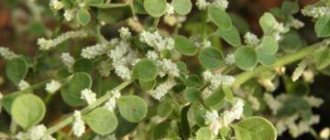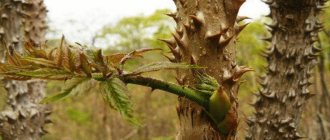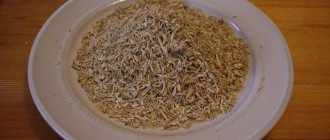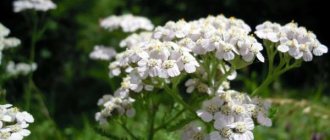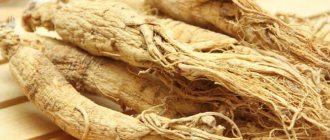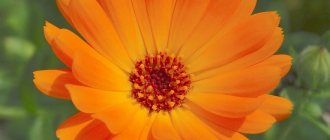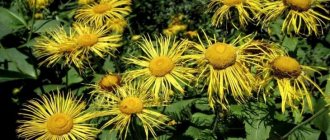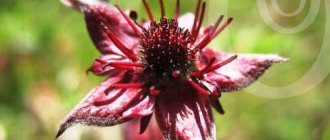Everyone knows valerian extract, or in common people - “valerian”. As soon as you get a little excited and grab your heart, you can immediately hear the advice to “drink some valerian.” And indeed, the excitement will subside, the heartbeat will return to normal, and your soul will feel lighter. This simple medicine is found in almost every home, but it is surprising that few people know what the plant itself looks like, although it is found everywhere. Valerian officinalis is a herbaceous perennial that can be grown in open ground and in your own apothecary garden. Planting and care are not difficult, but there are some growing features, especially for medicinal purposes, that you should be aware of.
It is interesting that in pharmaceuticals the concept of “valerian” is a collective one, including several varieties of the plant, since different types of this crop have healing properties.
Botanical description
The root system of the plant is loose, consists of a short thick rhizome, from which numerous cord-like roots extend.
The stem is erect and lightly branched, rounded, 0.6-1.5 m high. Leaves are petiolate, unpaired. The flowers are small. The color can be white, purple, pale pink. At the top of the stem they are collected in a large corymbose panicle. Corolla with a five-lobed limb, three stamens, ovary inferior. Blooms from late May to August The fruit ripening process begins at the end of August and continues in September. The fruit is an achene with a fluffy tuft. It has a strong, stuffy smell of flowers, which attracts a lot of small pollinating insects.
Valerian officinalis is unpretentious to ecology, therefore it grows in a variety of conditions: - in grass and peat bogs, lowlands, swampy meadows, along the banks of rivers and lakes, in thickets of bushes, in forest clearings and edges
In Russia it grows almost everywhere. It does not form thickets suitable for harvesting. In the northern regions it has thinner roots, and in the southern regions, on the contrary, the rhizomes and roots are larger. Cultivated in many farms in the central part of the Russian Federation, in Ukraine and Belarus, as a basis for the manufacture of medicines
Caring for valerian plantings
Many gardeners say that without proper fertilizing it will not be possible to get a good harvest of valerian rhizomes, is this really true? The answer is ambiguous: “Yes and no.” The entire growing season of the plant will directly depend on the condition of the area allocated for planting the crop; this applies not only to valerian, but to all cultivated plants.
Fertilizing with valerian will only be needed on poor soils, sandy loam or loamy soils; turf soils with sufficient humus content rarely need additional enrichment.
Mineral and organic fertilizers are applied as fertilizers in the first year of the plant's growing season, during flowering. To increase the yield of rhizomes and raw materials, in the second year of the growing season, flower stalks on the plant must be removed.
During dry periods, abundant watering is needed, at least twice a week. Weeding is carried out as needed. Valerian does not need hilling, except that you can do a couple of loosenings for better aeration and moisture absorption.
The first harvest of medicinal raw materials can be obtained from the bush already in the first year of the growing season, however, the rhizomes of the second year of life are considered the most useful. The medicinal specimens remaining for seeds should be fed with potassium-phosphorus fertilizers and mulched for the winter.
Interesting Facts
- The smell of valerian spread over the surface is very popular with domestic cats. It not only attracts their attention, but literally drives them crazy. The animal begins to roll on the floor or wrap circles around an object that emits the smell of valerian. In some cases, it may be noted that the cat looks as if after taking narcotic drugs. However, not all breeds are susceptible to this influence. It has been proven that small kittens are completely indifferent to the smell of valerian. It is also interesting that some cat breeds are resistant to the smell of valerian. For example, valerian tincture has no effect on Siamese cats
- According to ancient legend, a certain Panteley the healer went into the forest early in the morning to collect medicinal herbs. When he came out into a forest clearing, he was stunned by the beauty that had opened up to him: strange plants grew among the bushes, gray in the morning light. It was as if there were a lot of soft pink lights glowing in the dark hanging in the air. There was a feeling as if thin, light streams were rising straight from the ground and gently swaying in the morning cool. Panteley cautiously entered the clearing and, after thinking a little, began to dig up the ground in search of the roots of the mysterious plant. And then he was surprised to discover that the more he collected roots of strange flowers, the better and more at ease he felt. When the bag was filled to the brim, at the same time the healer’s soul was filled with joy and joy. On the way home, Panteley distributed amazing roots to people he met along the way, and they, inhaling the aroma of the plant, immediately began to experience an extraordinary surge of vigor and vitality. This is how the herb valerian was discovered
Photo gallery
Economic importance and application
Valerian officinalis is used in everyday life and in many industries. For example:
- In everyday life: fresh flowers of the plant are used to steam jugs to prevent milk from souring in them
- In pharmaceuticals - for the manufacture of drugs
- In animal husbandry - for treating animals from spasmodic colic
- In scientific medicine - for the treatment of diseases of various etiologies
- In the tobacco industry - as a flavoring agent in the production of Havana cigars and Turkish tobacco
- In the alcoholic beverage industry - in the production of essences, liqueurs, tinctures
Application in cosmetology
Valerian oil has a calming effect.
For cosmetic purposes, oil made from valerian root is used. Use it to care for the skin of your hands and face. It also allows you to get rid of irritations on the skin, various rashes, and neurodermatitis.
Valerian-based products are also being prepared that can fight wrinkles and have a lifting effect.
Valerian officinalis: beneficial properties
Valerian officinalis is one of the most popular and valuable plants in nature.
Preparations based on valerian root enhance the process of inhibition in the cerebral cortex, reduce reflex excitability and have a normalizing effect on the human nervous system. About 100 useful substances were found in the roots of the plant. The roots contain up to 2% essential oil, sesquiterpenes, borneol esters of formic, acetic and butyric acids, nitrogen-containing and caessil alcohols; alkaloids, tannins, saponins, sugars, organic acids, glycosides and other equally useful substances At the end of the 19th century, it was believed that “valerian root” was an excellent strengthening, stimulant, anticonvulsant and even anthelmintic. It was given for epilepsy, hysteria, hypochondria, migraine, and other nervous diseases
In scientific medicine, preparations from the root of the plant are used as a sedative and as an antispasmodic (in relation to the smooth muscles of the gastrointestinal tract and urinary system). It has been proven that the roots have a choleretic effect, and also increase gastrointestinal secretion and dilate coronary vessels. Not long ago it was found that valerian has a beneficial effect in the treatment of thyroid diseases
Doctors recommend it for sleep disorders associated with overexcitation, migraines, mild functional disorders of the cardiovascular and digestive systems (as part of combination therapy)
In folk medicine, valerian officinalis is used for diseases such as heart disease, angina pectoris, heart pain, cardiac neuroses, etc., especially those arising from anxiety, excitement and stress. Traditional medicine also recommends drinking fresh juice from the roots and rhizomes of the plant. Powder from valerian roots is popularly taken for scarlet fever, pneumonia, gastritis, migraines, and even for the treatment of gynecological diseases. As part of complex therapy, along with other therapeutic measures, it is prescribed for epilepsy.
Despite the large number of studies and scientific experiments conducted, the medicinal properties of valerian have not yet been fully studied.
Growing Valerian
Planting and care in open ground are simple and not difficult, but some aspects depend on the chosen variety. In particular, the method of reproduction, which will be discussed below.
Choosing a landing site
The plant loves moist but light soils. It can be loam or sandy loam, but cat grass will grow and bloom best on black soil or soils similar in fertility. With regard to illumination, the type and purpose of planting should be taken into account. If you are planning on being decorative, it is better to choose more illuminated areas. The humidity of the area may be high; valerian is demanding of moisture.
When planning planting, you should take into account the proximity to other crops, since goatee can grow up to 2 m and shade other beds.
Watering
What is desirable is not so much abundant as regular watering. The plant needs moisture not only for flowering and the formation of seeds and rhizomes, but also for the accumulation of important substances in it - primarily essential oils.
Valerian officinalis: collection and preparation
The roots and rhizomes of the plant are used for medicinal purposes. Harvesting should be carried out in late autumn (late September - mid-October), when the growth of the root mass is completed.
Rhizomes with roots are cleaned of the remains of aerial parts and soil, thick rhizomes are cut lengthwise, quickly washed with water (no more than 20 minutes) and dried with active ventilation, spread out in a layer of 3-5 cm, for a week. Finished raw materials are stored in tightly closed containers or paper bags. Shelf life of raw materials is no more than three years
Harvesting of roots in early spring, before the beginning of the growing season, is allowed, but at the same time the quality and yield of raw materials are almost halved
Pharmacological properties
According to pharmacognosy, valerian officinalis has a number of positive effects on the human body, due to which it is used for medical purposes. Pharmacological actions are as follows:
- Calming effect. Perhaps this is the most famous property of this plant. If you ask a person what he would drink “for his nerves,” he will almost certainly answer – drops of valerian. Indeed, the herb helps calm the central nervous system and relieve muscle spasms. This in turn allows you to cope with nervous disorders, sleep problems, high blood pressure, and heart attacks.
- Normalization of the digestive process. Valerian-based products help relax smooth muscles, relieve spasms, and improve peristalsis. Therefore, the plant helps well with problems with the gastrointestinal tract, for example, with frequent constipation and pain in the gall bladder.
- Improving a woman's condition during menstruation. Many girls do not tolerate menstruation well, they experience pressure surges, headaches, and increased irritability. Valerian helps to cope with these manifestations.
- Allergic reaction. The herb calms the nervous system in case of neurodermatitis, which helps reduce the amount of skin rashes and the intensity of itching.
Valerian has a multifaceted effect on the body
. Valerian is harmless and does not harm human health. But you still need to use it in the dosages recommended by the instructions, as side effects are possible.
Traditional treatment recipes
For rhinitis: 1 tbsp. pour a spoonful of valerian roots with 100 grams of olive oil. Leave in a warm place for 10 days. Place 1-2 drops into the nose, 1-2 times a day. Long-term treatment
For menopause: 10 g. Pour 1 cup of boiling water over valerian roots, leave until cool, strain. Drink 1/2 glass at night or during the day
For obesity : pour 70 grams of crushed valerian roots into 1 liter of cool water, heat in a boiling water bath for 30 minutes, then remove from heat and leave for 10 minutes. Strain and add boiled water to the original volume. Drink 70 ml. 20 minutes before meals
For scarlet fever: Grind valerian rhizomes in a blender to a powder. Use 1-2 grams per dose and no more than 3-4 grams of powder throughout the day
For headaches: Pour 1 tbsp. spoon of crushed valerian root with a glass of boiling water, hold in a water bath for 15 minutes, cool, strain, add boiled water to the original volume. Take 1/4 cup three times a day after meals
To cleanse blood vessels: 100 gr. mix dill seeds with 50 gr. crushed valerian rhizomes, pour 2 liters. boiled water. Let the drink cool, add 2 tbsp. spoons of honey, close the lid tightly and leave for 24 hours in a warm place. Drink 1 tbsp. spoon 30 minutes before meals, 3 times a day. The course of treatment is 20 days, then a break of 10 days and take a second course
For myocardial infarction: pour 50 grams of root crushed in a blender into 200 ml. boiled water, leave in a thermos for 5 hours. Heat again in a boiling water bath for 30 minutes. Leave for 10 minutes. Strain and add boiled water to the original volume. Drink 1 teaspoon before bedtime
For heart failure: . 1 tbsp. pour 200 ml of chopped roots into a spoon. boiled water, leave in a thermos for 1 hour, strain, add honey to taste. Drink 70 ml. on an empty stomach and before bed
For neuroses, migraines, insomnia: 5 g. Brew crushed valerian root in 250 ml of boiling water, simmer in a thermos for at least 2 hours, strain. Take 0.5 cups morning and evening
For nervous shock (“fright”) in children: dilute 7-10 drops of juice in 1 teaspoon of boiled water. Take 5 times a day
If you need to quickly relieve nervous tension and resulting headaches, you can prepare tea from the root of valerian officinalis and lemon balm leaves, mixed in equal parts. To do this, pour 2 teaspoons of herbal mixture into 250 ml. boiling water, let it brew for 15 minutes, strain and drink in small sips
Sleeping tea is also prepared, but instead of lemon balm, the same amount of common hop cones is added to the valerian root. Drink it at night, before going to bed
Contraindications for use
It is not recommended to use valerian-based products in the following cases:
- individual intolerance to this herb;
- liver diseases;
- gallbladder pathology;
- increased drowsiness, lethargy;
- depressed state of the central nervous system, developing against the background of any disease;
- children under 3 years of age.
Valerian should be used with extreme caution in the following cases:
- bearing a child;
- breast-feeding.
Valerian should be used with extreme caution during pregnancy.
People undergoing treatment with valerian will have to stop driving. The fact is that the medicine helps slow down reactions and reduces concentration.
